==================
A Caveat and Affiliates
First off, a little caveat: within my articles you will find affiliate links, meaning if you buy them, I get a small commission. Your cost is not affected. In addition, I am an Amazon Associate and I earn from qualifying purchases on Amazon.
And yes, if I say that I recommend a product here, it means I truly believe it is a good product. I refuse to recommend any product that I have not researched and believe to be a good value.
Even better, I provide you with a very clear picture of the product, it’s use, and the probable value.
Earning your trust is important to me. I run this website myself and the commissions and donations help support the site.
Sound reasonable and fair enough? Let’s continue to the article.
==================
Weed eaters, string trimmers, or weed whackers are outdoor power equipment used for cutting grass and weeds in areas that are hard to reach with a lawnmower. The primary purpose of weed eaters is to maintain lawns and landscapes by providing precision trimming in tight spots that conventional mowers cannot access. Choosing the right weed eater, gas or electric, is crucial for efficient and effective lawn care. The debate between gas and electric weed eaters has been ongoing, each with its advantages and disadvantages.
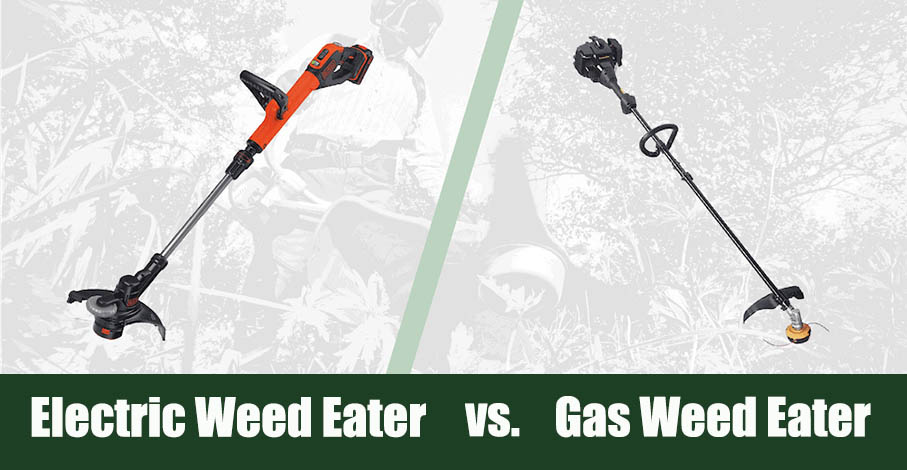
When considering a weed eater, several factors come into play, such as battery run time, cutting capacity, and whether it comes with attachments like an edger or brush cutter. The choice between a gas or electric weed eater depends on the user’s specific needs, the property’s size, and the cutting power required. In the following sections, we will delve deeper into the features, benefits, and drawbacks of gas and electric weed eaters, helping readers make informed decision.
Gas-Powered Weed Eater
Gas-powered weed eaters, gas string trimmers, or weed whackers are equipped with a gasoline engine that powers the cutting head. Unlike electric weed eaters, which rely on electricity from a cord or battery, gas-powered models provide greater cutting power, making them suitable for thick weeds and tall grass in large properties. The trimmer string, usually made of durable material, spins rapidly when the engine runs, quickly cutting through unwanted vegetation. These gas trimmers offer the advantage of continuous use, as there is no need to recharge batteries or deal with cord limitations.
Pros and Cons
Gas-powered weed eaters have their own set of advantages and disadvantages. On the positive side, they offer robust cutting performance, making them suitable for heavy-duty tasks. A power cord does not constrain them, ensuring unrestricted movement during use. Moreover, gas trimmers often come with various attachments, such as brush cutters and wheeled edgers, increasing their versatility for different lawn care tasks. However, one major drawback is the noise and emissions produced by the gasoline engine, which can be bothersome to users and may contribute to air pollution.
Power and Performance
Gas string trimmers are known for superior power and performance to their electric counterparts. With their gas engines, they can effortlessly handle tough jobs like thick weeds and tall grass. Their cutting ability allows for precise trimming in tight spots and areas that are hard to reach, providing users with the necessary oomph for maintaining a well-manicured lawn.
Mobility and Portability
The gas-powered trimmers’ mobility and portability are unmatched due to their cordless design. Users can move freely around the yard without being tethered to a power source, increasing efficiency and reducing the hassle of cord management. This unrestricted access also makes gas weed eaters suitable for large properties where extension cords may not reach.
Noise and Emissions
One significant drawback of gas-powered weed eaters is the noise they generate during operation. The combustion engine produces considerable noise levels, disturbing the quiet in residential areas. Additionally, gas trimmers emit exhaust fumes, contributing to air pollution and potentially causing health concerns if used in confined spaces without proper ventilation.
Factors to Consider When Choosing a Gas-Powered Weed Eater
When it comes to maintaining a well-groomed lawn or yard, choosing between a gas-powered weed eater and an electric one is crucial. Gas-powered weed eaters offer their advantages, making them a popular choice for homeowners and professional landscapers. This guide will explore the essential factors when selecting a gas-powered weed eater over an electric alternative. These factors play a significant role in determining the tool’s efficiency, performance, and user experience.

Engine Size and Horsepower
One of the primary considerations when choosing a gas-powered weed eater is the engine size and horsepower. The engine size directly impacts the weed eater’s cutting capability and efficiency. Opting for a model with a larger engine and higher horsepower provides more power to easily tackle dense vegetation, thick weeds, and tall grass. Gas string trimmers with higher horsepower are recommended for large properties or commercial use to ensure consistent performance.
Fuel Type (Gasoline, Two-Stroke, Four-Stroke)
Gas-powered weed eaters typically run on either two-stroke or four-stroke engines. The choice between these fuel types affects not only the performance but also the overall maintenance requirements. Two-stroke engines are lightweight and provide high power-to-weight ratios, making them ideal for heavy-duty tasks. On the other hand, four-stroke engines offer improved fuel efficiency and produce fewer emissions, contributing to a cleaner environment. Understanding the differences between the fuel types will help you make an informed decision based on your needs and environmental concerns.
Maintenance Requirements
Regular maintenance is crucial for extending the lifespan and ensuring the optimal performance of your gas-powered weed eater. These machines require periodic oil and filter changes, spark plug inspections, and carburetor adjustments. Choosing a model with easily accessible maintenance points and straightforward procedures simplifies upkeep. Understanding the maintenance requirements will enable you to keep your weed eater in peak condition, allowing for reliable and efficient operation over time.
Weight and Ergonomics
Comfort and ease of use are significant factors, particularly if you have a large property or plan to use the weed eater for extended periods. Gas-powered weed eaters can vary significantly in weight, with some models being bulkier than others. Opt for a lightweight model that offers a comfortable grip and adjustable handles for better maneuverability and reduced fatigue during operation. A well-designed weed eater with ergonomic features ensures a smoother and more enjoyable trimming experience.
Electric Weed Eater
Electric weed eaters, string trimmers, or weed whackers are gardening tools used to trim and edge grass and weeds in areas difficult to reach with a lawnmower. These devices utilize a rotating nylon string or line to cut through vegetation, making them versatile and effective for various yard maintenance tasks.
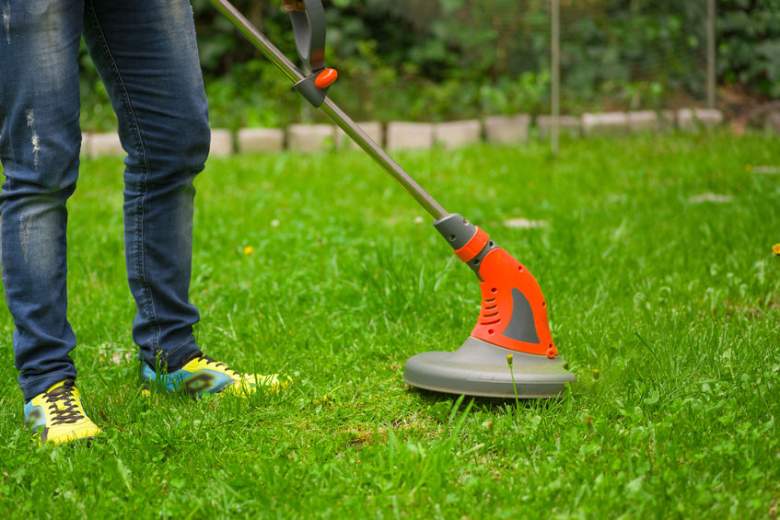
Pros and Cons
Electric weed eaters offer several advantages over their gas-powered counterparts. They produce zero emissions, making them environmentally friendly and ideal for those seeking a greener approach to lawn care. They are generally quieter and require less maintenance than gas string trimmers.
However, electric weed eaters also have some limitations. The corded models are limited by the length of their power cord, which may restrict movement and limit their range. On the other hand, cordless models have a limited battery life, and users must consider the run time and charging time when using them for extended periods.
Environmental Impact
One of the most significant benefits of electric weed eaters is their positive environmental impact. As they run on electricity, they produce no harmful emissions contributing to air pollution and global warming. Users can actively reduce their carbon footprint and promote sustainable lawn care practices by choosing an electric weed eater over a gas-powered one.
Noise Level
Another advantage of electric weed eaters is their relatively low noise level. They operate quietly compared to gas string trimmers, reducing noise pollution and creating a more pleasant experience for users and their neighbors. This makes them suitable for noise-sensitive areas like residential neighborhoods and public parks.
Ease of Use and Starting Mechanism
Electric weed eaters are generally easy to use, even for beginners. They are lightweight and maneuverable, allowing users to easily reach tight spots and edges. Moreover, starting the device is as simple as plugging it in for corded models or pressing a button for cordless ones, eliminating the hassle associated with pull-starting gas trimmers.
Types of Electric Weed Eaters
There are two main types of electric weed eaters: corded and cordless/battery-powered models.

Corded Electric Weed Eater
Corded electric weed eaters are powered by electricity through a cord that needs to be connected to a power outlet. They provide continuous power, eliminating the need for recharging or replacing batteries. However, the range is limited by the length of the power cord, making them more suitable for small to medium-sized yards.
Cordless/Battery-Powered Weed Eater
Cordless electric weed eaters operate on rechargeable batteries, offering increased portability and freedom of movement. They are perfect for larger yards or areas with limited access to power outlets. However, users should consider the battery life and charging time to ensure uninterrupted operation during longer sessions.
Factors to Consider When Choosing an Electric Weed Eater
Selecting the right electric weed eater requires careful consideration of various factors to meet specific needs and preferences.
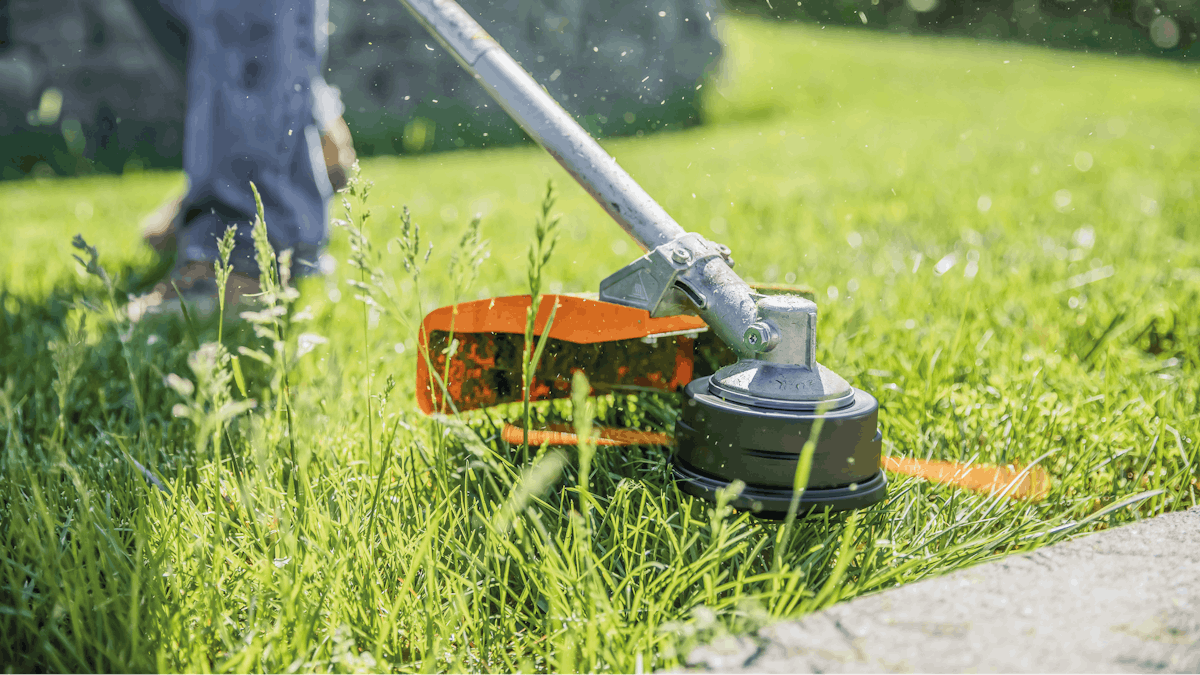
Battery Life and Charging Time (for Cordless Models)
For cordless models, battery life is a crucial factor. Users should opt for weed eaters with batteries with sufficient run time to complete their yard work without frequent recharging. Additionally, charging time is vital to ensure minimal downtime during extended sessions.
Power and Cutting Capacity
An electric weed eater’s power and cutting capacity determines its effectiveness in handling different vegetation types. Users should look for models with sufficient power to cut through thick weeds and grass effectively.
Weight and Ergonomics
An ideal electric weed eater should be lightweight and ergonomically designed to reduce strain and fatigue during extended use. Comfortable handles and a balanced design contribute to a better user experience and ease of maneuverability.
Performance Comparison
This performance comparison assesses the cutting power, efficiency, runtime, continuous operation, handling, maneuverability, noise, and environmental impact of gas vs. electric weed eaters and cordless string trimmers. With a wide range of outdoor power equipment available, it is essential to understand how these tools differ in various aspects to make informed choices for lawn care. The following sections will delve into the key factors affecting their performance.

Cutting Power and Efficiency
Regarding cutting power and efficiency, gas string trimmers have long been favored for their robust performance. They possess higher engine power, easily tackling thick weeds, tall grass, and dense vegetation. The gas-powered trimmers, such as Husqvarna and Stihl models, boast a cutting capability that can handle large properties efficiently.
On the other hand, electric weed eaters, particularly cordless string trimmers, have made significant strides in this area. Modern advancements in battery technology have significantly improved their cutting power, offering performance comparable to gas trimmers. Brands like Ryobi have introduced powerful cordless options, balancing cutting efficiency and battery life.
Runtime and Continuous Operation
Runtime and continuous operation are crucial, especially for large properties or extensive trimming sessions. Gas string trimmers traditionally offered an advantage, as they could run continuously as long as fuel was in the tank. However, they also come with the inconvenience of needing to refuel regularly and emitting more noise and fumes.
Cordless string trimmers have made significant strides in terms of runtime. With longer-lasting batteries, some models can now offer extended operation on a single charge, providing more flexibility and reducing the need for frequent interruptions. This makes them more convenient for both small and medium-sized lawn care tasks.
Handling and Maneuverability
Handling and maneuverability are crucial in achieving a clean and precise trim. Gas string trimmers tend to be heavier, making them more challenging to handle for extended periods, especially for users with less upper body strength. Additionally, the vibrations from the gas engine can cause discomfort during the operation.
On the other hand, cordless string trimmers are generally lighter, making them easier to maneuver and control, even in tight spots. Their cordless design also eliminates the hassle of managing a power cord during trimming, enhancing overall maneuverability and user comfort.
Noise and Environmental Impact
Noise pollution and environmental impact are significant concerns when using outdoor power equipment. Gas string trimmers are notorious for their loud operation, which can disturb neighbors and cause discomfort to the user. Moreover, gas engines emit exhaust fumes, contributing to air pollution.
Cordless string trimmers, being electric-powered, produce significantly lower noise levels and zero emissions during use. This eco-friendly approach benefits the user and contributes to a healthier environment.
Cost Comparison
In outdoor power equipment, choosing the right tool can significantly impact your lawn care routine. One of the fundamental decisions when selecting a weed eater is whether to go for a gas-powered model or an electric one. Each option has its benefits and drawbacks, and the cost is a crucial factor that needs thorough consideration. We will conduct a comprehensive cost comparison between gas and electric weed eaters to help you make an informed decision.
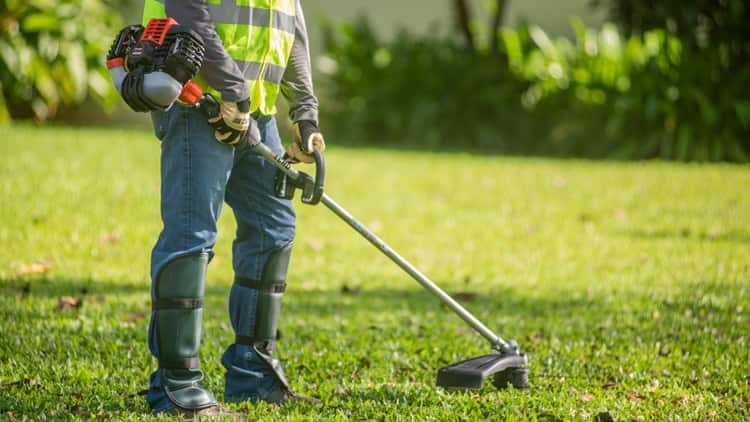
Initial Purchase Cost
The initial purchase cost is the first factor to examine when weighing your options. Gas-powered weed eaters typically have a higher upfront price than their electric counterparts. This cost discrepancy is primarily due to the more complex engine and additional components required in gas models. On the other hand, electric weed eaters generally have a more straightforward design, leading to lower initial investment.
Long-term Maintenance and Operational Expenses
Beyond the initial purchase, the long-term maintenance and operational expenses play a vital role in the overall cost of ownership. Gas-powered weed eaters often require more maintenance due to their internal combustion engines. Regular maintenance tasks such as oil changes, spark plug replacements, and air filter cleanings contribute to higher ongoing expenses.
In contrast, electric weed eaters are relatively low-maintenance machines. They eliminate the need for gas, oil, and spark plug replacements. This results in cost savings over time and reduces the hassle of maintenance, making electric models an attractive option for budget-conscious users.
Cost of Fuel
For gas-powered weed eaters, fuel is a significant ongoing expense. The price of gasoline can fluctuate, impacting the overall cost of operating the machine. Additionally, gas engines tend to consume more fuel during extended use, leading to more frequent refueling.
On the other hand, electric weed eaters operate on electricity, which is generally more stable and predictable in cost compared to gasoline. The cost of electricity per unit is typically lower than the equivalent energy obtained from gasoline. Furthermore, advancements in battery technology have resulted in longer run times and faster charging, further reducing operational costs.
Environmental Impact of Gas-Powered and Electric-Powered Weed Eaters
In outdoor power equipment, weed eaters are popular tools for trimming grass and weeds in gardens, lawns, and landscapes. Two main types of weed eaters dominate the market: gas-powered and electric-powered models. As environmentally conscious consumers increasingly seek ways to reduce their carbon footprint, it becomes essential to assess the environmental impact of these devices. This section explores the environmental implications of gas-powered and electric-powered weed eaters, focusing on emissions and air pollution for gas-powered models and carbon footprint and energy consumption for electric-powered ones.
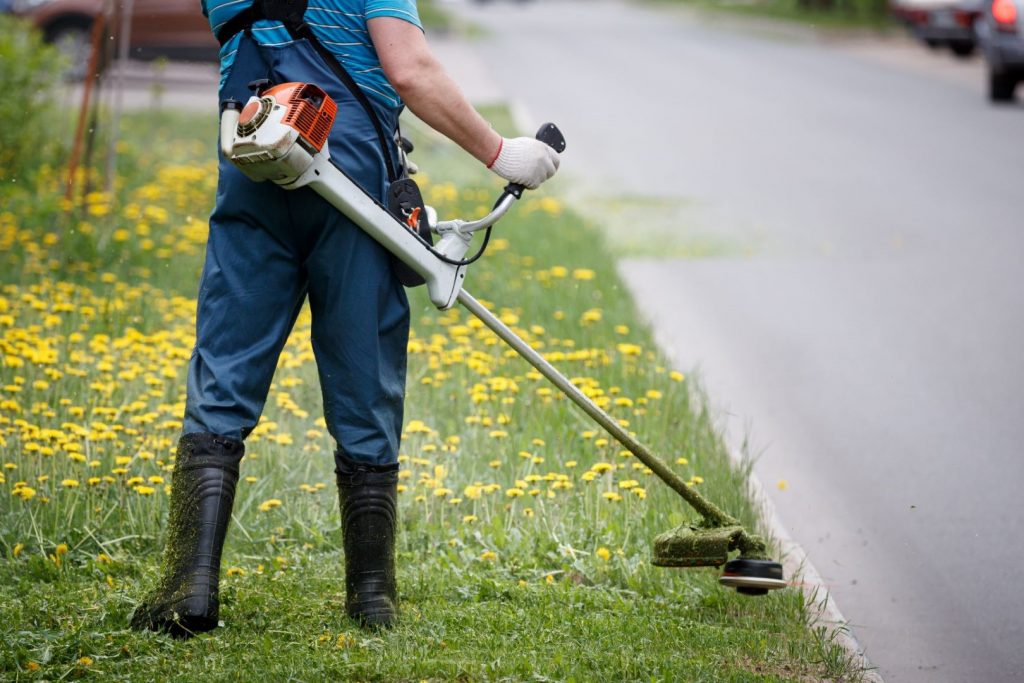
Emissions and Air Pollution (Gas-Powered)
Gas-powered weed eaters rely on internal combustion engines that burn fossil fuels, typically gasoline, to generate power. Unfortunately, these engines release harmful emissions into the atmosphere, contributing to air pollution. The combustion process produces carbon dioxide (CO2), nitrogen oxides (NOx), volatile organic compounds (VOCs), and particulate matter (PM), all of which are associated with adverse environmental and health impacts.
Carbon Dioxide (CO2) Emissions
The burning of gasoline in gas-powered weed eaters emits significant amounts of CO2, a greenhouse gas contributing to global warming and climate change. As a result, these emissions are a major concern in the fight against climate change.
Nitrogen Oxides (NOx) and Ozone
Gas-powered engines also release nitrogen oxides, which can lead to the formation of ground-level ozone. Ozone is a key component of smog and has detrimental effects on respiratory health and the environment.
Volatile Organic Compounds (VOCs)
VOCs are another type of emission produced during combustion. They can contribute to the formation of ground-level ozone and harm human health.
Particulate Matter (PM)
Gas-powered engines produce particulate matter, tiny particles that can be inhaled into the lungs, causing respiratory problems and air pollution.
Carbon Footprint and Energy Consumption (Electric-Powered)
Electric-powered weed eaters, on the other hand, do not emit direct emissions during operation. However, their environmental impact lies in their carbon footprint and energy consumption related to electricity generation.
Carbon Footprint
Electric weed eaters indirectly contribute to emissions through electricity consumed during charging and operation. The carbon footprint depends on the energy mix of the electricity grid, which varies by location.
Energy Consumption
Electric-powered models consume electricity from various sources, including fossil fuels, nuclear, hydro, wind, and solar power. The energy source used to generate electricity determines the overall environmental impact.
Safety Considerations When Operating Gas and Electric Weed Eaters
When it comes to maintaining lawns and gardens, weed eaters, also known as string trimmers, play a crucial role in keeping the edges and hard-to-reach areas tidy. Different weed eaters, including gas and electric models, are available in the market. Each type has safety features and precautions to consider, ensuring safe and efficient operation. We will explore the safety considerations for gas and electric weed eaters, along with tips for their safe use and suitability for various applications.
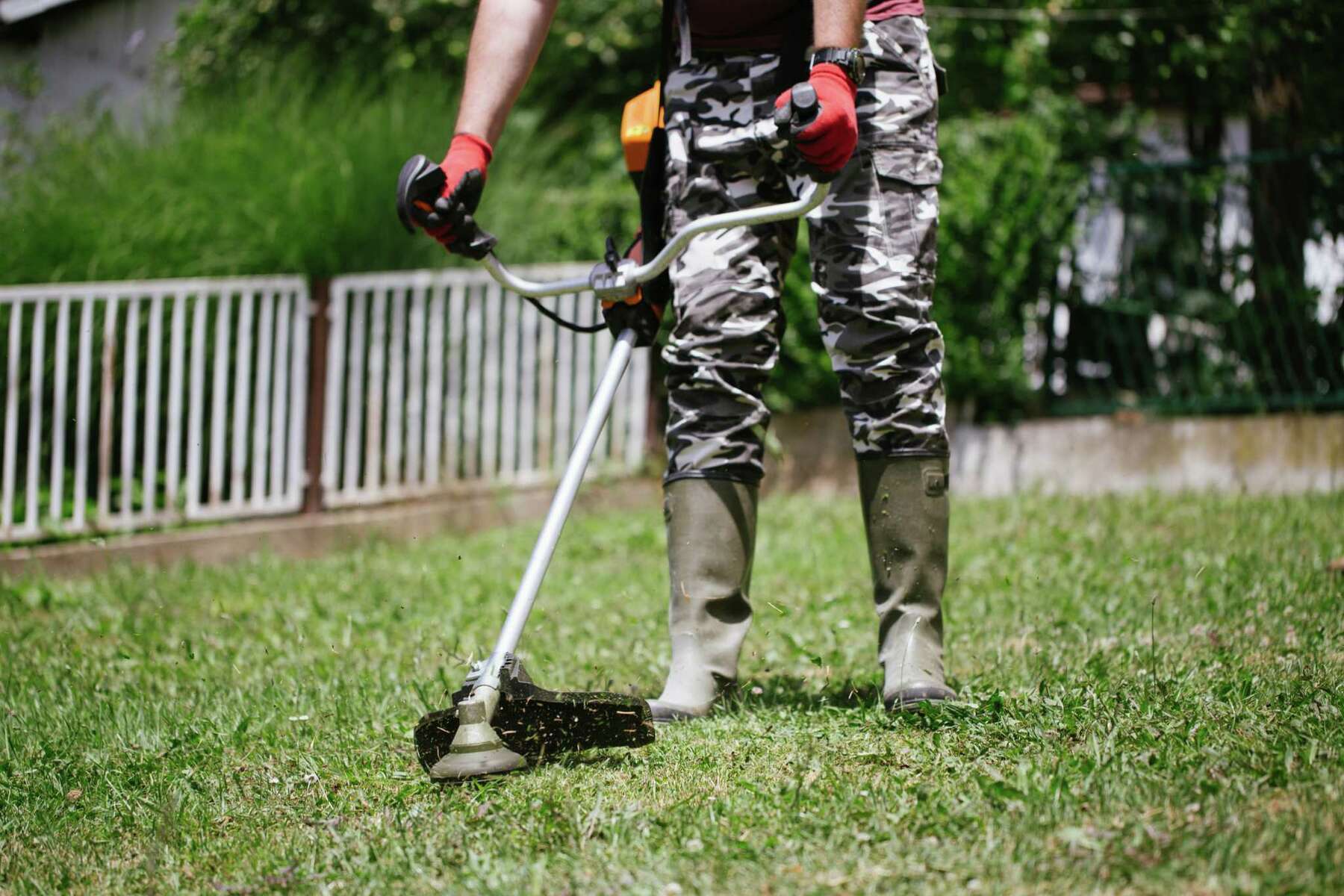
Safety Features and Precautions for Both Types
Gas and electric weed eaters are designed with safety in mind, and it’s essential to understand their safety features and take appropriate precautions while using them.
Gas Weed Eaters
Gas-powered weed eaters offer excellent mobility and power, ideal for large properties and tough weeds. Here are some safety features and precautions to keep in mind:
- Safety Guards: Gas weed eaters have protective guards that shield the user from flying debris and stones. Always ensure the guard is securely attached before operating the trimmer.
- Two-Handed Operation: Many gas models have a two-handed operation system, which requires both hands to be on the handle to activate the throttle. This prevents accidental startups and ensures better control during use.
- Noise and Vibration: Gas weed eaters can be noisy and cause vibrations during operation. Consider wearing hearing protection and using anti-vibration gloves for added comfort and protection.
Electric Weed Eaters
Electric weed eaters are generally quieter, lighter, and easier to start than gas models. However, they have their safety considerations:
- Cord Management: Corded electric trimmers require careful cord management to avoid accidental cutting of the power cord during operation. Secure an extension cord with proper insulation from the trimming path.
- Battery Safety: Always use the manufacturer’s recommended battery and charger for cordless electric trimmers. Follow the charging instructions and avoid overcharging the battery to prevent potential hazards.
Tips for Safe Operation
Regardless of the type of weed eater you choose, following these safety tips will help ensure accident-free operation:
- Wear Protective Gear: Always wear appropriate safety gear, including safety goggles, ear protection, gloves, long pants, and sturdy closed-toe shoes to shield yourself from debris and possible injuries.
- Inspect the Trimmer: Inspect the weed eater before each use for damage or lost parts. Ensure that all safety features, such as guards and shields, are in place and functioning correctly.
- Clear the Area: Remove any obstacles, rocks, or objects from the area you plan to trim. This will prevent flying debris from causing damage or injury.
- Avoid Wet Conditions: Operating a weed eater on wet grass or rainy conditions can be dangerous due to reduced traction and increased slipperiness. Always wait for dry weather to use the trimmer.
- Keep a Safe Distance: Maintain a safe distance from bystanders, pets, and other objects while operating the weed eater. The spinning string can throw debris, potentially causing harm.
- Know Your Limits: If you encounter particularly tough weeds or thick vegetation, take your time and avoid pushing the trimmer beyond its capabilities. Use appropriate power tools like brush cutters or wheeled edgers for heavy-duty tasks.
Suitability for Different Applications
Gas and electric weed eaters offer distinct advantages, making them suitable for various applications. Understanding their strengths and limitations can help you choose the right tool for your needs.

Residential Use
Both gas and electric weed eaters can be suitable options for homeowners with average-sized yards and light to moderate trimming needs.
- Electric Weed Eaters: Electric trimmers are perfect for residential use due to their ease of use, lighter weight, and lower noise levels. They are well-suited for maintaining small to medium-sized lawns and gardens with regular grass and weeds.
- Gas Weed Eaters: Gas-powered trimmers are ideal for larger residential properties with extensive trimming requirements or thicker vegetation. They provide more power and extended run times, making them suitable for tackling tougher tasks.
Commercial Use
In commercial settings, such as landscaping businesses and professional gardening services, the choice between gas and electric weed eaters can significantly affect efficiency and productivity.
- Gas Weed Eaters: Gas trimmers are preferred for commercial use, especially large-scale landscaping projects. Their higher power output and longer runtime make them more efficient for tackling extensive areas and heavy-duty trimming.
- Electric Weed Eaters: Electric trimmers can still be useful for commercial use, particularly for smaller properties and maintenance jobs in noise-sensitive areas like hospitals, schools, and residential neighborhoods.
Large or Difficult Terrains
Choosing between gas and electric weed eaters can significantly impact performance and convenience when dealing with large properties or challenging terrains.
- Gas Weed Eaters: Gas-powered trimmers excel on large properties with uneven terrain, tall grass, and dense vegetation. Their mobility and powerful cutting capabilities make them the preferred choice for demanding tasks.
- Electric Weed Eaters: Electric trimmers are better suited for smaller properties with relatively flat terrain and less dense vegetation. For large properties with easy access to power outlets, corded electric trimmers can still be viable options.
Choose Your Perfect String Trimmer Today!
Based on specific needs and preferences, we recommend considering the following factors in the gas vs. electric weed eater debate. Like the cordless string trimmers, a cordless string trimmer could be ideal for those seeking portability and convenience. However, gas string trimmers may offer enough power and oomph for larger properties or tough vegetation. Additionally, a wheeled edger may be helpful in maintaining tidy edges. It’s crucial to assess run time and battery life for cordless options. Features like adjustable settings and attachments provide greater control. Ultimately, the best string trimmers vary, and thorough research is necessary to find a suitable match for lawn care needs.
🌞 Discover Your Perfect Outdoor Oasis! 🌿
Transform your backyard into a paradise with Backyard Patio Life! 🔥🪴🍹 Follow us on Facebook, Instagram, Pinterest, and Twitter for endless inspiration, top-notch tips, and exclusive deals on outdoor power equipment, string trimmers, cordless lawnmowers, and more!
🏡 🛠️ Don’t miss out on creating the lawn of your dreams!
Join our vibrant community today and stay connected to the latest trends and innovations in lawn care and outdoor living. 🌳🏖️ Unleash the potential of your backyard – Follow Backyard Patio Life now! 🚀💚 #BackYardPatioLife #OutdoorLiving #LawnCare #FollowUs
Frequently Asked Questions
What are the main differences between gas and electric weed eaters?
Gas weed eaters are powered by gasoline, offering higher cutting power but emitting fumes and requiring more corded or cordless maintenance. Electric weed eaters run on electricity and are more eco-friendly, with lower noise levels and easier maintenance.
What is the advantage of using a cordless string trimmer?
A cordless string trimmer, such as the cordless string trimmers mentioned above, provides increased mobility and flexibility during trimming sessions as there is no cord to restrict movement or risk accidental disconnection.
How do I choose the best string trimmer for my lawn care needs?
When selecting the best string trimmer, consider yard size, grass height, power source (gas or electric), run time, weight, cutting capability for thick weeds, and easy handling in tight spots.
What's the significance of a low-speed setting in a trimmer?
A low-speed setting on a string trimmer allows precision trimming in delicate areas, preventing plant damage and ensuring thorough lawn care.
What features should I look for in a wheeled edger for my large property?
For a large property, opt for a wheeled edger with enough power, adjustable cutting depth and angle, a durable blade, and a comfortable handle grip to ensure efficient edging and ease of use.